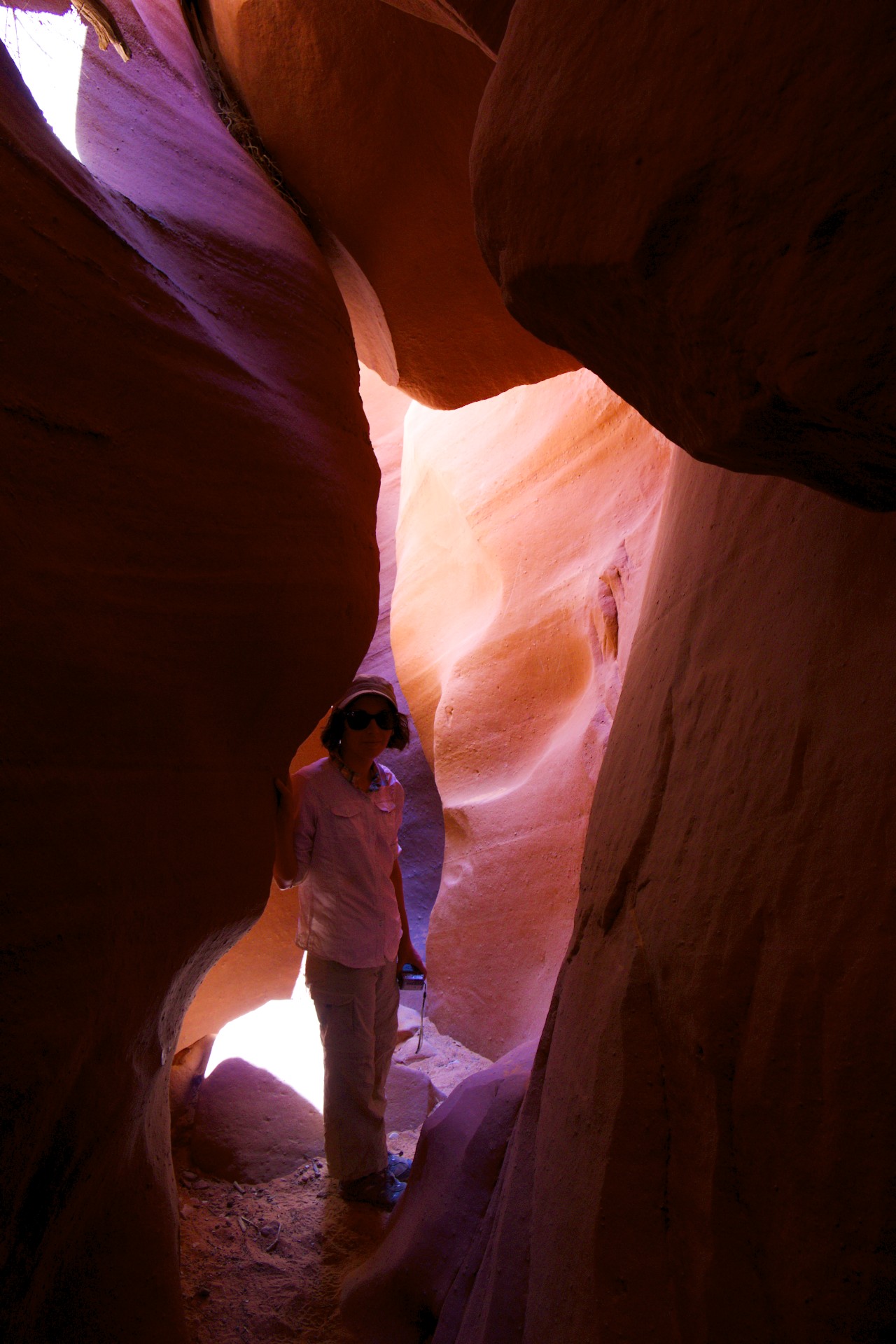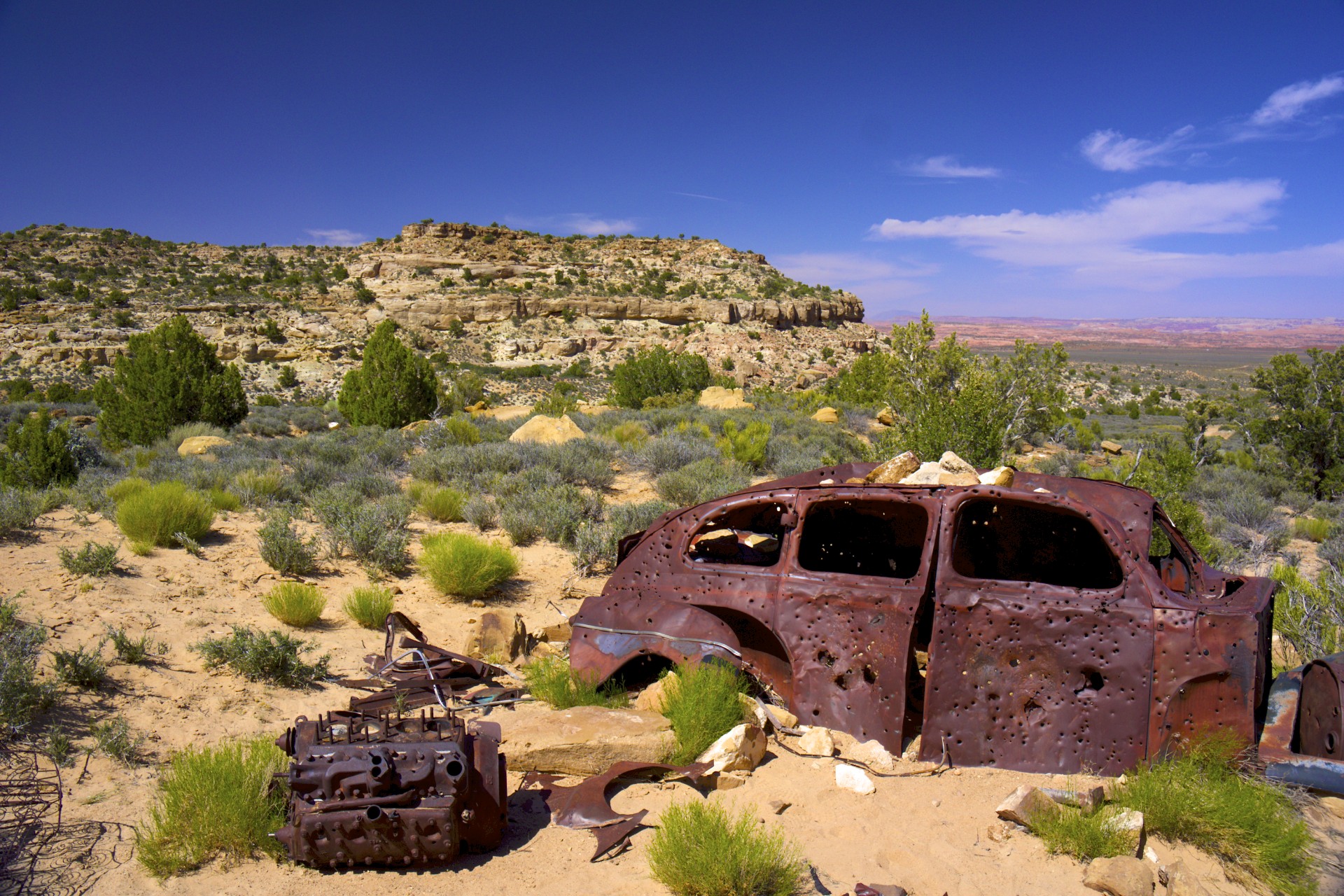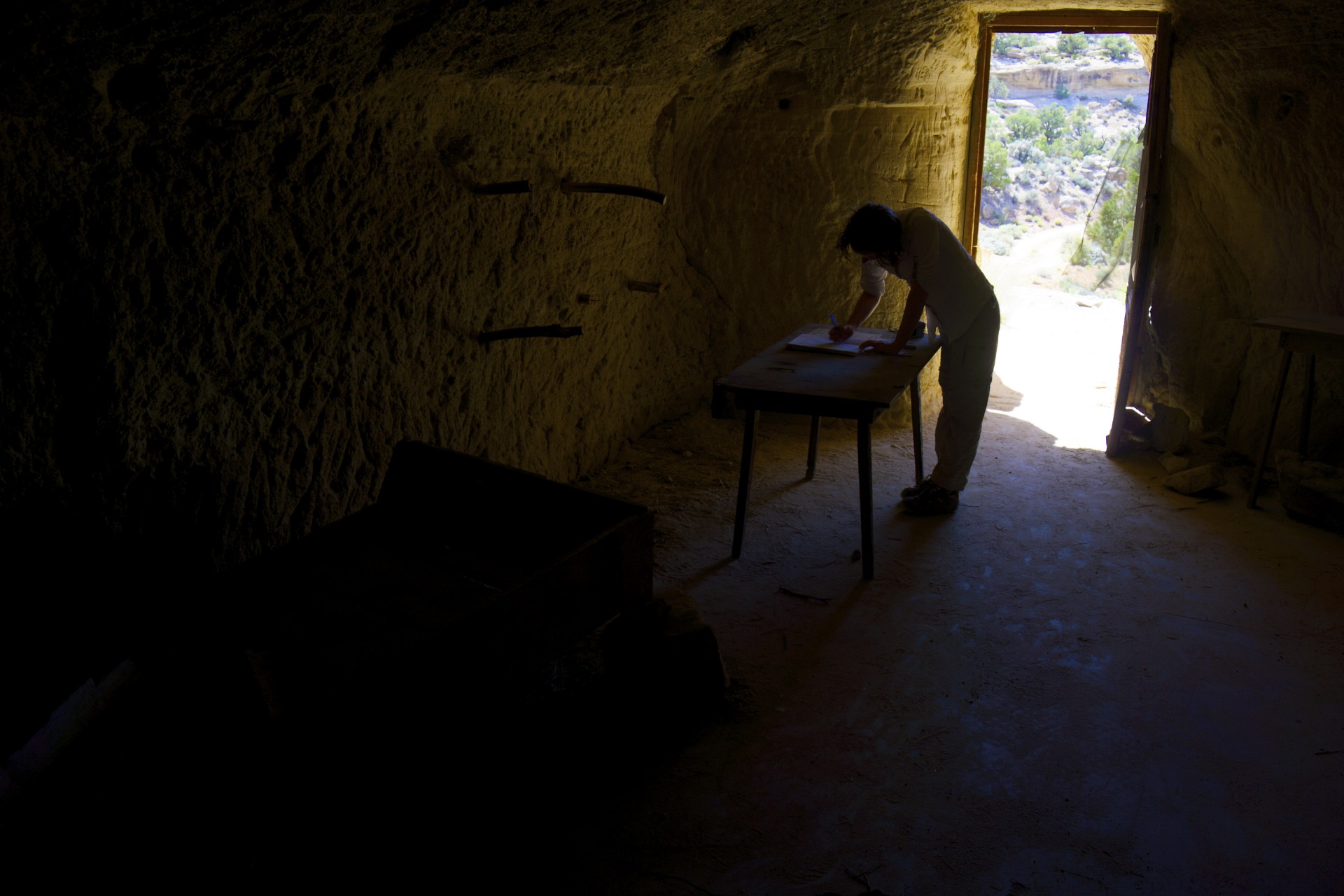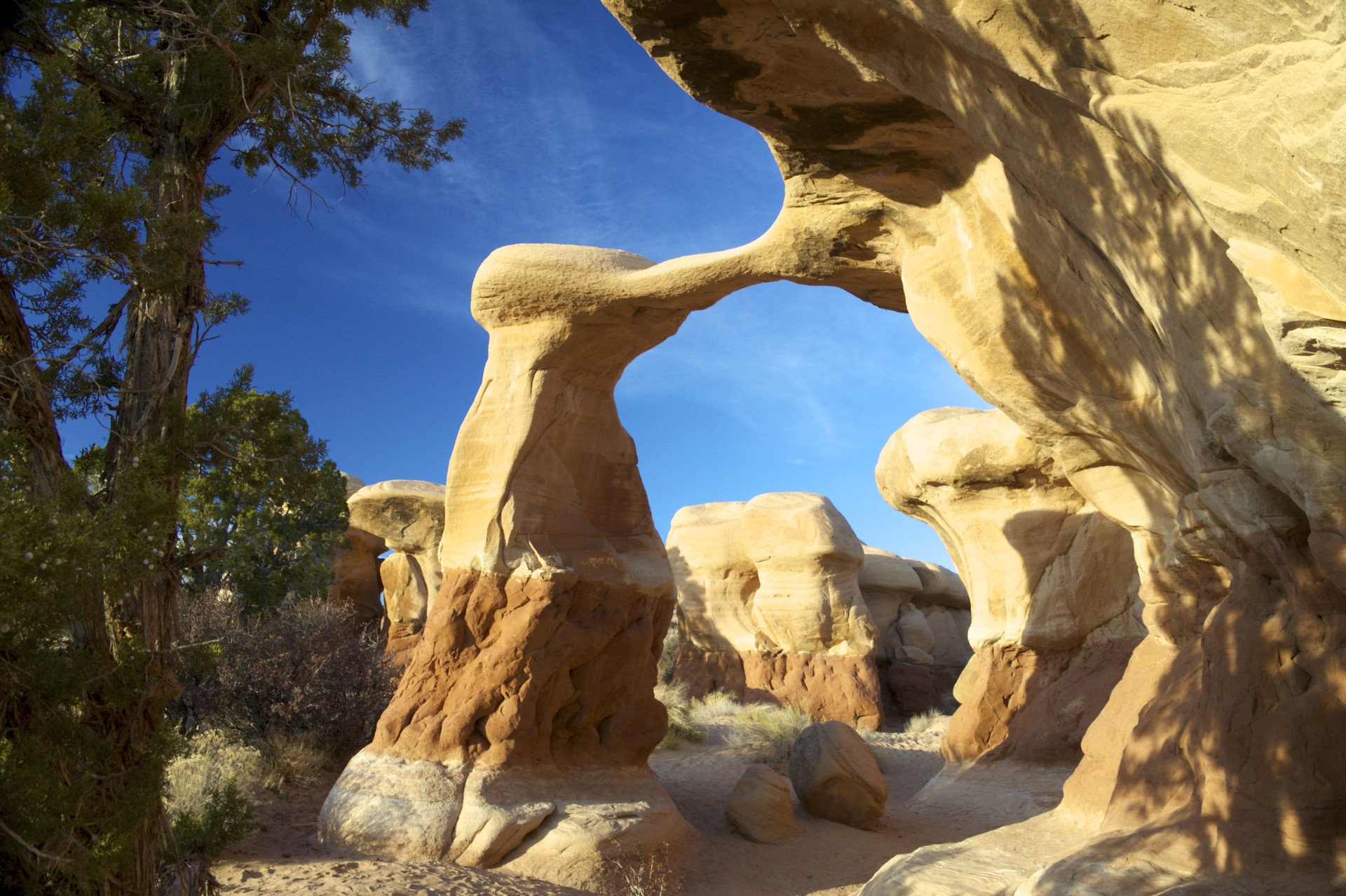Chris Roams
Travel, Adventures, and Photography
More Canyons
May 21, 2012
The Grand Staircase-Escalante National Monument covers an enormous swath of land nearly 100 miles across and 60 miles high, an area the size of Delaware. Not a single paved road crosses it in any direction and a series of high cliffs and sharp ridges prevent even the rugged backcountry roads from running across laterally. At the southern end of colorful Cottonwood Canyon, in the western half of the monument, lies the remains Paria, of one of the numerous ghost towns that can be found across Utah. Built in a time before paved highways when the rivers and their valleys offered the most expedient routes for travel (and in fact Cottonwood Canyon still hosts one of the only 2 backcountry roads that cross the monument) the town was eventually wiped out by the convenient river that it was built along. Today the area is used as a set for hollywood movies.
Moving on to the eastern half of the monument and another relic from a bygone era, the Hole in the Rock Road was originally built by Mormon pioneers heading out to settle new towns in southeastern Utah. Its namesake, a hole in the rocky walls of the canyon of the Colorado River at the road’s south end, led to a ferry crossing of the river that it was abandoned within a year due to the route’s difficulty. Today the path still exists as a dirt road running south from the ranching town of Escalante to a dead-end at the Colorado River, used primarily by ranchers to access their herds or by hikers to access the canyons of the nearby Escalante River. Many of those canyons are narrow “slot canyons”, sometimes barely a foot wide but often incredibly deep.
Although the road follows a mostly-flat bench a few miles west of the Escalante River it is penned in by a high wall of sheer cliffs only a few miles further west. Near a spot known as Batty Pass are the traces of pioneers of a different sort. The beginning of the Cold War brought with it a uranium boom as the government sought to build more nuclear reactors and bombs. A layer of uranium ore underlies much of the Colorado Plateau and the prospectors came in droves, trundling across the desert in their Jeeps looking for radioactive deposits. 2 of these prospectors were brothers who came here to the Hole in the Rock and while they didn’t find any uranium they decided to stay anyways, digging 3 caves out of the soft sandstone at the foot of the cliffs and living here for a number of years. One small cave served as a bedroom while its larger neighbor contained machine tools, some of which still remain in situ. The third cave, the only one without a door, contains a half-constructed boat. Outside are the remains of a tortured old car shot full of holes, its paint rusted off, and its engine sitting on the ground half dismantled.
On the way out we revisited Devils Garden, a maze of twisted sandstone full of arches, alcoves, hoodoos, and other bizarre forms carved out of the plateau by a nearby stream.







Moving on to the eastern half of the monument and another relic from a bygone era, the Hole in the Rock Road was originally built by Mormon pioneers heading out to settle new towns in southeastern Utah. Its namesake, a hole in the rocky walls of the canyon of the Colorado River at the road’s south end, led to a ferry crossing of the river that it was abandoned within a year due to the route’s difficulty. Today the path still exists as a dirt road running south from the ranching town of Escalante to a dead-end at the Colorado River, used primarily by ranchers to access their herds or by hikers to access the canyons of the nearby Escalante River. Many of those canyons are narrow “slot canyons”, sometimes barely a foot wide but often incredibly deep.
Although the road follows a mostly-flat bench a few miles west of the Escalante River it is penned in by a high wall of sheer cliffs only a few miles further west. Near a spot known as Batty Pass are the traces of pioneers of a different sort. The beginning of the Cold War brought with it a uranium boom as the government sought to build more nuclear reactors and bombs. A layer of uranium ore underlies much of the Colorado Plateau and the prospectors came in droves, trundling across the desert in their Jeeps looking for radioactive deposits. 2 of these prospectors were brothers who came here to the Hole in the Rock and while they didn’t find any uranium they decided to stay anyways, digging 3 caves out of the soft sandstone at the foot of the cliffs and living here for a number of years. One small cave served as a bedroom while its larger neighbor contained machine tools, some of which still remain in situ. The third cave, the only one without a door, contains a half-constructed boat. Outside are the remains of a tortured old car shot full of holes, its paint rusted off, and its engine sitting on the ground half dismantled.
On the way out we revisited Devils Garden, a maze of twisted sandstone full of arches, alcoves, hoodoos, and other bizarre forms carved out of the plateau by a nearby stream.







- Acadia National Park
- Adirondacks
- Aerial
- Airstream
- Ancient Bristlecone Pines
- Anza-Borrego
- Appalachian Trail
- Arches National Park
- Backpacking
- Bad Larry
- Bears Ears National Monument
- Boatpacking
- Boston
- Bryce Canyon National Park
- Canoeing
- Canyon de Chelly National Park
- Canyoneering
- Canyonlands National Park
- Capitol Reef National Park
- Caribbean
- Catskills
- Cities
- Climbing
- Colorado National Monument
- Colorado Plateau
- Death Valley National Park
- Europe
- Fisher Towers
- Grand Canyon National Park
- Grand Staircase-Escalante National Monument
- Grand Teton National Park
- Gunks
- Hiking
- Iceland
- Joshua Tree National Park
- Lassen Volcanic National Park
- Manzanar National Historic Site
- Mojave Desert
- Mojave National Preserve
- Mountaineering
- Mt Washington
- Mt Whitney
- Natural Bridges National Monument
- New York CIty
- Pacific Northwest
- Petrified Forest National Park
- Pinnacles National Monument
- Red Roamer
- Road Trips
- Rocky Mountains
- Ruins
- Sailing
- San Diego
- San Francisco
- Sequoia National Park
- Sierra Nevada
- Skiing
- Sonora Desert
- Spelunking
- Superbloom
- Superstition Mountains
- White Mountains
- Yellowstone National Park
- Yosemite National Park
- Zion National Park